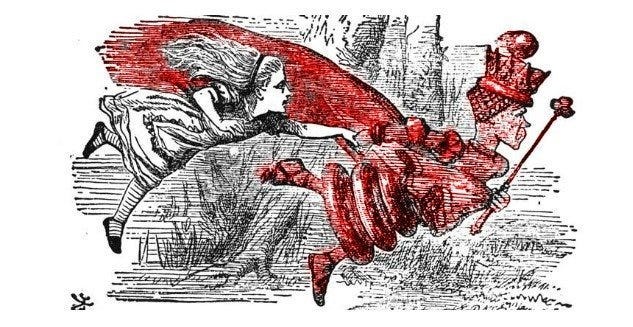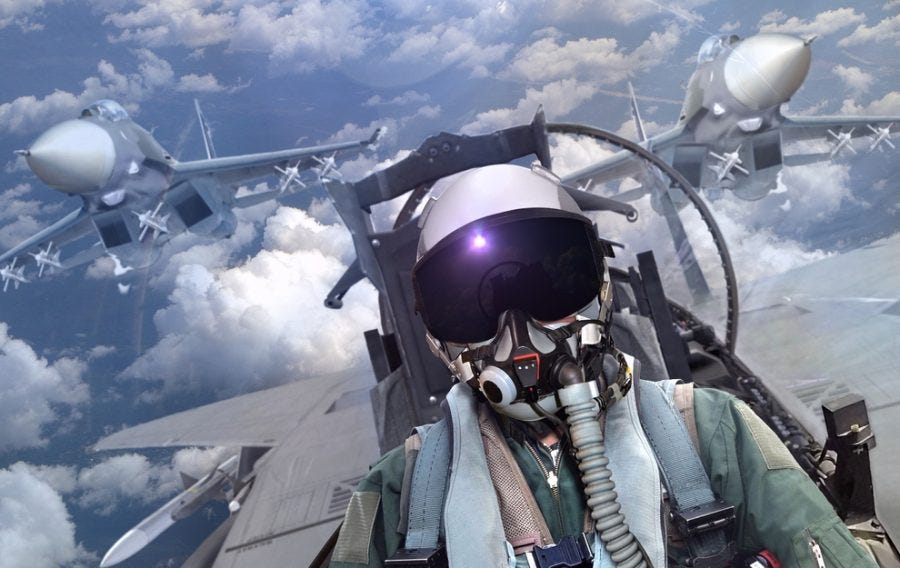This article provides background context for a new G (adaptive general intelligence) augmentation course that will be running for paid subscribers, with general themes and insights summarised through this free channel over time.
Course introduction
Across 55 economies, the World Economic Forum’s Future of Jobs 2025 finds that two-fifths of today’s skills will be reshaped by 2030. Employers name analytical thinking as the most sought-after core skill, closely followed by resilience/flexibility and leadership/social influence — and 85% plan to prioritise upskilling to get there. That’s the demand signal this module answers. It turns those abstract priorities into concrete habits you can practise and measure. (1).
At the same time, power is shifting towards whoever best combines cognitive capital (human judgment amplified by data and AI) with information operations (how signals and narratives are shaped and filtered for truth). That doesn’t just matter for geopolitics; it decides whose project delivers, whose pitch lands, and whose claim is trusted. Cloud, chips and data now form a real “architecture of power”—from boardrooms to battlefields. (2, 3, 4)
“The brain is both the target and the weapon in the fight for cognitive superiority.” — NATO ACT
We train to defend and use that ‘weapon’ ethically.
What “Inside the Loop” means
You will use a decision cycle as daily scaffolding. The classic model is OODA — Observe → Orient → Decide → Act — whose aim is not perfection but being less wrong, faster: sense cleanly, frame honestly, choose with expected value, act—and learn—at a tempo that compounds advantage. OODA runs at three timescales (operational, tactical, strategic) and the art is to keep your loop short and the problem’s (or a rival’s) longer.
The Multipolar Red Queen lens (the world you are now applying your intelligence in)
In a multipolar Red Queen (MRQ) world, rivals adapt while you adapt; the bar keeps moving. Traditional power (energy, money, hard assets) scales roughly linearly, but AI-driven cognitive capital and info-ops scale super-linearly, steepening power curves and rewarding those who learn faster with cleaner signals, authentic commitments and asymmetrical results (keystone projects).
In our MRQ world, lots of capable players — states, platforms, corporations and other firms, activist networks — are adapting at the same time. The returns don’t just go to whoever has the most cash or people; they go to whoever learns faster on shared digital rails — the cloud, chips, data pipelines, and models. Those rails let actors sense, fuse, and broadcast at scale, so tiny learning advantages can compound quickly.
The same cloud that runs your product analytics is also the backbone for data-fusion and influence operations. That means:
Speed and scale are ambient. Near-real-time sensing and computing power are the default. The game is who filters noise into authentic insight faster.
Signals are contested. Attention and belief are battlegrounds: low-quality narratives are cheap to launch. If your inputs are noisy, you get out-learned.
Credibility is currency. Partners, users, and regulators route trust towards actors whose claims are checkable and whose forecasts are calibrated, valid and reliable.
Perception vs reality in “hybrid battle spaces”
Short-term, perceived truth can outrun reality in a ‘grey zone’ of power politics and competitive advantage. That’s why we train two things at once:
Perception-aware orientation — see the mechanics behind the message:
Who benefits if I believe this? What’s the channel and amplifier (bots, paid reach, outrage bait)? What would be a costly, checkable test?
Treat perception as terrain you must read — not as your target state.Truth-anchored execution — stay in the Ψ-band “sweet spot” (alert, adaptable, not overloaded). We force base rates → calibrated updates → checkable signals so salience/dopamine-heavy spikes don’t hijack decisions. In Unit 1 we pair this with n-back training (EM-DBN / EN-DBN) to harden attention and interference control, so you keep judgement when the narrative heat rises.
Why the “cleaner loop” is the right response
Base rates before headlines blunt hype and adversarial framing.
Calibrated forecasts let you place lots of small, scored bets—you improve faster than rivals who posture.
Checkable signals create credible commitments — the basis for asymmetric wins (keystone projects) when everyone else is spinning stories.
Bottom line: MRQ turns the world into a race of competing (could be team-based) learning loops on shared cloud infrastructure. That’s why we train a clean, fast Trident G Loop — your personal strategy for compounding advantage where speed, signal quality, and credibility decide who wins.
The OODA Loop (quick refresher)
In my previous piece, Cognitive Speed: Outpacing Chaos with the OODA Loop, OODA is framed as a real-time cognitive engine for fast, adversarial contexts — born in the cockpit, useful in boardrooms, surgeries, and sport. The aim isn’t to be perfect; it’s to be less wrong, faster.
OODA insights:
1) Observe critical data → 2) Orient with your mental models → 3) Decide on a course → 4) Act decisively — then repeat fast enough to get inside their loop.
Challenge doctrine or ossify. Boyd’s ethos — challenge assumptions or today’s doctrine becomes tomorrow’s dogma — lives inside Orient, so your models don’t fossilise as the world moves.
Across timescales. OODA scales from real-time to tactical (weeks) and strategic (quarters), keeping one grammar for sensing, framing, choosing and acting.
Capacity synergy. OODA tightens as working memory, attention control, and error monitoring improve — hence higher=speed dual n-back training to shorten phases under pressure.
Everyday example. Temporal dominance in self-defence: move before the follower finalises a plan. Add uncertainty (e.g., move towards a crowd) to force them to be reactive — inside your loop.
Takeaway: OODA gives a shared language and tempo mindset, plus simple triggers (spot your bottleneck, tighten phases by ~20%, log a one-line After Action Review (AAR)).
Why we upgrade to the Trident G-Loop (OODA++)
OODA is excellent at speed. The Trident G-Loop keeps the speed but exposes the dials your brain actually uses to stay fast without getting sloppy. Each lap reads the world and your embodied ‘readiness’ level (AKA ‘spider sense’), then branches decisively into a Creative pass (decompress/explore) or a Control pass (compress/exploit), makes a risk-aware choice, executes with micro-stability, and learns/consolidates so the next lap is smarter — all while staying in the Ψ-band (between rigid focus and noisy chaos).
Micro-stability means the moment of commit is steady; you make the channel stable at the instant of execution. Both incremental and bold moves land cleanly.
The eight phases (with Bushido concepts)
Sense & Move (situational awareness) — What’s true right now, and what’s my embodied readiness (“spider sense”)? Make any tiny tweak to see more clearly (open the right dashboard, step to a quiet spot, one settling breath). (Zanshin: wide, calm awareness.)
Gap-check & Branch — How big is the surprise vs my expectations (the “gap”)? Let the brain’s salience hub (priority-setting network) pick the track:
Creative (novelty high, clarity low → open up),
Control (clarity high, stakes high → tighten up), or
Flow / Autopilot (Gc) (novelty low, cues match a well-practised pattern, skill ≥ challenge → run the play).
Then set how exploratory I’ll be. (Fudōshin: hold centre while choosing.)(De)Compress —
Creative: generate options/analogies. (Keep Zanshin curiosity.)
Control: prune to invariants (rules that stay true), logic, and the next concrete step. (Steady with Fudōshin.)
Flow: skip heavy modelling; confirm cue-pattern match and load the relevant scripts/patterns. (Mushin: effortless action.)Decide/Gate —
Creative/Control: choose with expected value (probability × impact); if risk is spiky, switch to a tail-safe rule and pre-commit an IF→THEN abort/rollback so one big downside doesn’t scupper your week. (Frame with Fudōshin.)
Flow: default to the trained policy; act unless a simple tripwire (a preset trigger to stop/exit, e.g., “If X deviates > Y → re-branch”) fires. (Mushin with a tripwire.)Execute (dual) — Do the task and a micro-stability (decisiveness) routine (5–10s: one slow exhale + name one invariant) to stabilise the moment of commit. (Zanshin before/after; Mushin in Flow: breath + go.)
Reflect/Update — One sentence of learning; nudge your difficulty/exploration dials for the next lap. (Carry Zanshin into the AAR—After-Action Review.)
Consolidate — Save the improvement (script/pattern—your kata) so it’s easier and more spontaneous next time. (Update the kata in Flow.)
Reset — Recentre and re-enter the balanced Ψ-band (sweet spot between rigid focus and chaotic overload) for the next lap. (Re-establish Zanshin; ready kamae.)
Rule of thumb for Flow (Gc): use it when the gap is low, cues cleanly match a trained pattern, stakes are manageable, and time is tight. Keep a tripwire so any surprise bumps you back into Creative or Control fluid intelligence (Gf). Trained patterns can feel spontaneous and “in-tune” (mushin) — often outpacing rivals’ loops without effort with expertise.
Why this is OODA++
State-aware speed. OODA’s Orient is powerful but informal; Trident makes it explicit: check embodied readiness (“spider sense”) + situation, then branch on purpose to Creative, Control, or Flow/Autopilot (Gc) when the gap is low.
Risk-aware gating. Default to expected value (probability × impact). If risk is spiky (small chance of a big loss), switch to a tail-safe rule (e.g., protect the worst-case / minimise expected shortfall) and pre-commit an IF→THEN abort/rollback (a clear stop/revert condition, e.g., “If error > 5% after 2 min → revert”). If uncertainty is the bottleneck, take an information-seeking step first (cheap test, key question, quick probe).
Built-in consolidation. Every lap ends with one line of learning and a saved template/invariant (your “kata”), so tomorrow’s Decide/Act phases are shorter by default.
Ψ-band discipline. A non-zero difficulty set-point keeps you out of boredom and burn-out; you ratchet challenge with competence and use a 5–10s micro-stability reset before commit to keep bold moves clean.
Perception-aware, truth-anchored. Treat perception ops as terrain (spot channel/amplifier, ask for costly, checkable tests) while staying anchored to base rates, calibrated forecasts, and verifiable signals—so you keep tempo and judgement.
Unit-1
Day 1 pairs a 4-step version of this loop with Emotional-DBN n-back plus a threat map + guardrails.
Distilled loop: OODA teaches speed; Trident G teaches adaptive speed — scan your state, choose Creative / Control / Flow on purpose, make a risk-savvy choice, learn fast, and stay in the Ψ-band.
Through the week we alternate:
Emotional Dual n-Back (EM-DNB) — emotional distractors → stronger inhibition under salience.
Episodic / Non-categorical Dual n-Back (EN-DNB) — episodic cues → better relational mapping.
…with a short Logic-Gated Dual n-Back finisher about once a week. These capacity sessions make each Trident G lap snappier under pressure and help you stay in the Ψ-band when perception ops or novelty-driven dopamine spikes try to hijack attention.

Glossary
Expected value (EV): probability × impact; pick the option with the best risk-adjusted payoff.
Tail-safe rule: choose to limit the worst-case when there’s a small chance of a big loss.
IF→THEN abort/rollback: a pre-set stop/revert condition (e.g., “If KPI drops below X, revert”).
Tripwire (Flow): a simple trigger to exit autopilot when reality drifts.






